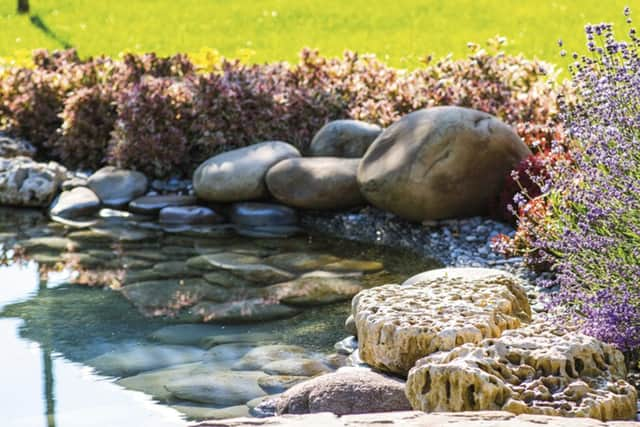Encourage wildlife biodiversity with a green garden pond


Making the most of your garden with a pond
How does your garden grow?
Gardens give great pleasure to thousands of green fingered growers across the country.
It doesn’t take a huge amount of effort to ensure wildlife can flourish in your garden, you just need to be aware of what creatures need so that you can enjoy your garden alongside the birds, butterflies and bees.
Advertisement
Hide AdAdvertisement
Hide AdWhich are the best plants to use?
In addition to growing pollinator friendly plants, encouraging birds with feeders and tempting other wildlife through log and leaf piles (so don’t tidy up too much), at the heart of any wildlife garden sits a pond or small water feature. All animals need water to thrive and a small wildlife-friendly garden pond can make a huge difference to your garden’s biodiversity.
Many people overestimate the effort and expertise required to fulfil the dream of a garden pond. Preformed ponds – that come in a variety of shapes and sizes – simplify the construction process and are perfect for the less experienced gardener or landscaper.


Experts from Oase UK, specialists in water gardening, have come up with a simple nine-point plan for easy installation of a pond – an autumn project that the whole family can help with.
You need the right tools for the job - a spade, a shovel, filling sand (play sand will do), a spirit level, a measure tape and a garden hose with a water connection and then it’s time to get started.
Advertisement
Hide AdAdvertisement
Hide Ad

Nine essentials
1 Position the preformed pond in the desired location and mark the outline with sand2 Mark the different depth zones of the pond with san
3 Now you can dig out the individual zones of the garden pond
4 Use the preformed pond to check you’ve dug enough out and touch up again if necessary
5 Level out the unevenness in the excavated steps with filling sand to create flat surfaces
Advertisement
Hide AdAdvertisement
Hide Ad6 Check the surfaces with a spirit level. If they are level the preformed pond can be inserted and then fill it one third with water so that the bowl settles
7 Next, pour the filling sand under the edge of the preformed pond and fill this cavity with water
8 Now level the surrounding soil with topsoil, which provides the basis for the subsequent planting. Make sure that no topsoil gets into the water as it will encourage algae growth in the pond
9 You can now carry out planting – important to maintain the biological balance of your pond and look beautiful. The surrounding bank zone can be filled with large stones and gravel after planting to cover the transition to the preformed pond. The pond can then be filled with water and plants.
Advertisement
Hide AdAdvertisement
Hide AdAs autumn gets under way there are a number of to-do’s for gardeners in addition to pond installation, so here are some tips for this month from the Royal Horticultural Society ...
Top tips
Cut back perennials that have died down
Divide herbaceous perennials
Move tender plants, including aquatic ones, into a greenhouse or conservatory
Plant out spring cabbages
Harvest apples, pears and nuts
Prune climbing roses; finish collecting seeds from the garden to sow next year
Last chance to mow lawns and trim hedges in mild areas